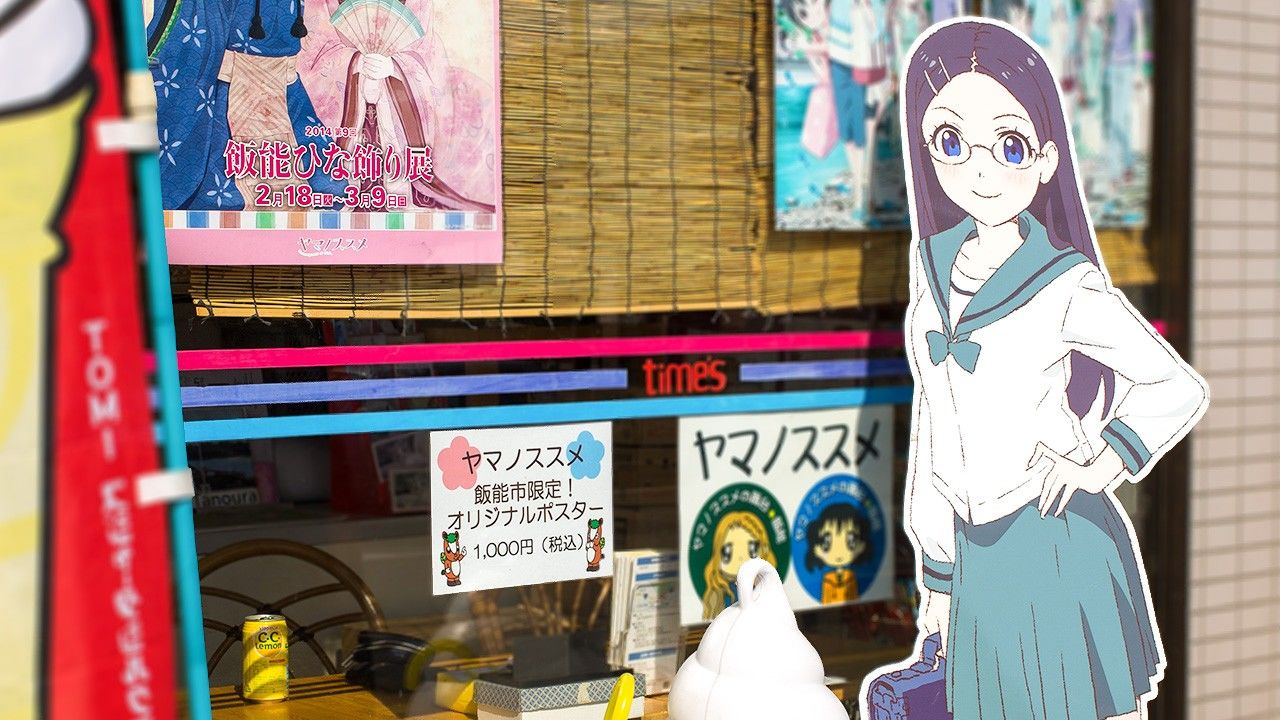
Japan’s Popular Tourist Destinations
Hannō, Saitama: Where Nature Meets Animation
Culture Anime Travel Manga- English
- 日本語
- 简体字
- 繁體字
- Français
- Español
- العربية
- Русский
The greater Tokyo area has plenty of trekking and hiking trails, from Mount Takao to Mount Mitake and the Okutama region. A relatively less known but equally beautiful place is Hannō in Saitama Prefecture, a mere 50-minute train ride from Tokyo’s Ikebukuro on the Seibu Ikebukuro Line.
During the feudal period this relatively small city (even today it has a population of less than 80,000) was mainly known for supplying Tokyo (then Edo) with timber. The area is still surrounded by heavily forested mountains.
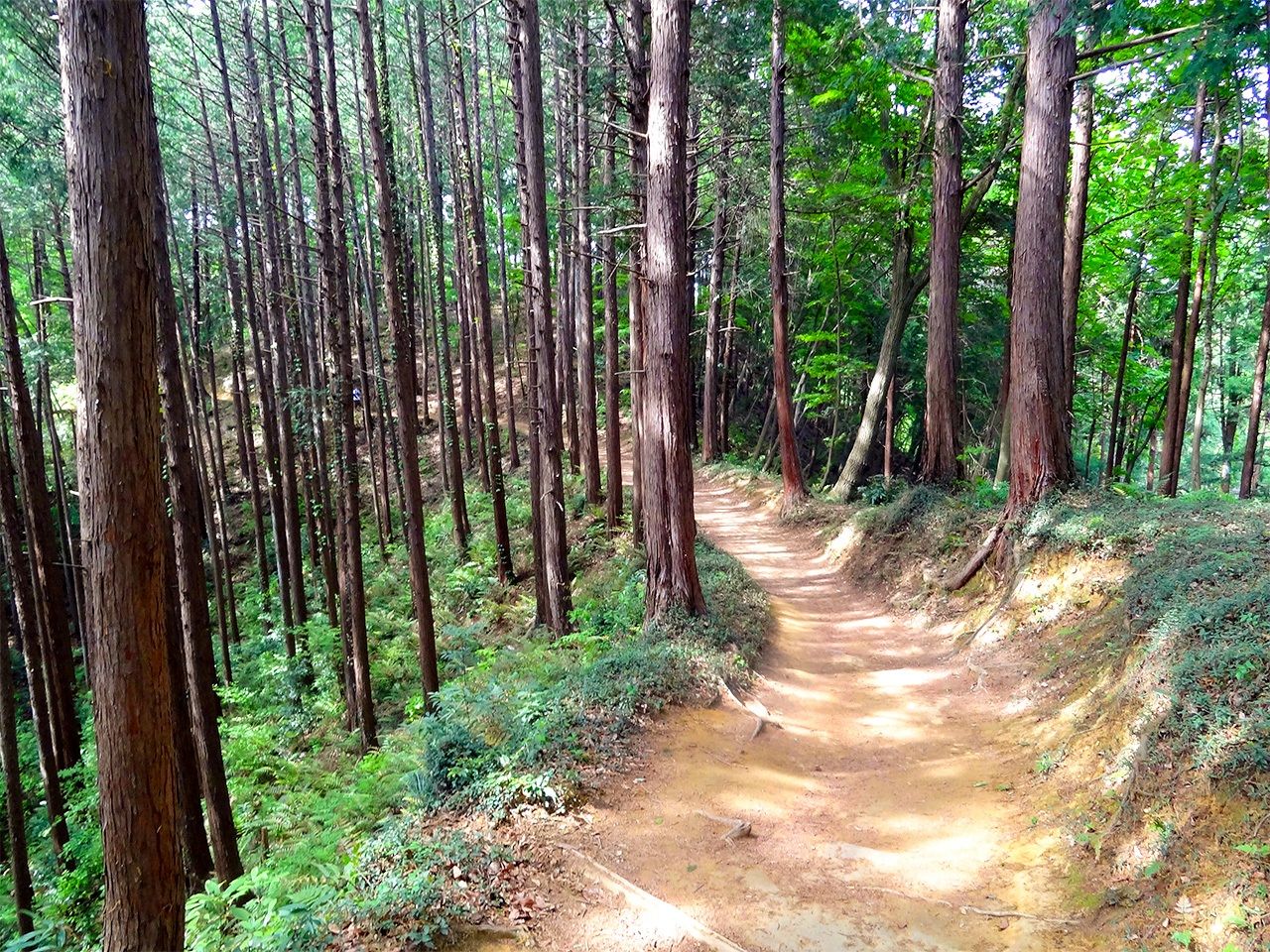
A common view in the mountains around Hannō. (© Gianni Simone)
When it comes to hiking and outdoor activities, Hannō may be one of the Kantō region’s best kept-secrets. That is, unless you are an otaku fan, in which case you probably already know it, as this place has strong links with contemporary anime and even the God of Manga himself, Tezuka Osamu.
Hannō’s latest renaissance, so to speak, began in 2011 when the manga Yama no susume (Encouragement of Climb) began serialization in a comic magazine and gathered steam when the first season of the anime version aired on TV in 2013.
As the title suggests, this work is about mountaineering and features real locations. The girls at the center of the story live in Hannō, and many of their adventures are set in the surrounding mountains. The work’s creator, an artist going by the single name of Shiro, is an avid hiker himself and was born in nearby Tokorozawa. It is easy to understand why he chose this little-known area as its main location. Indeed, this region offers a variety of hiking and walking opportunities, and the closest trails can be reached on foot from Hannō station.
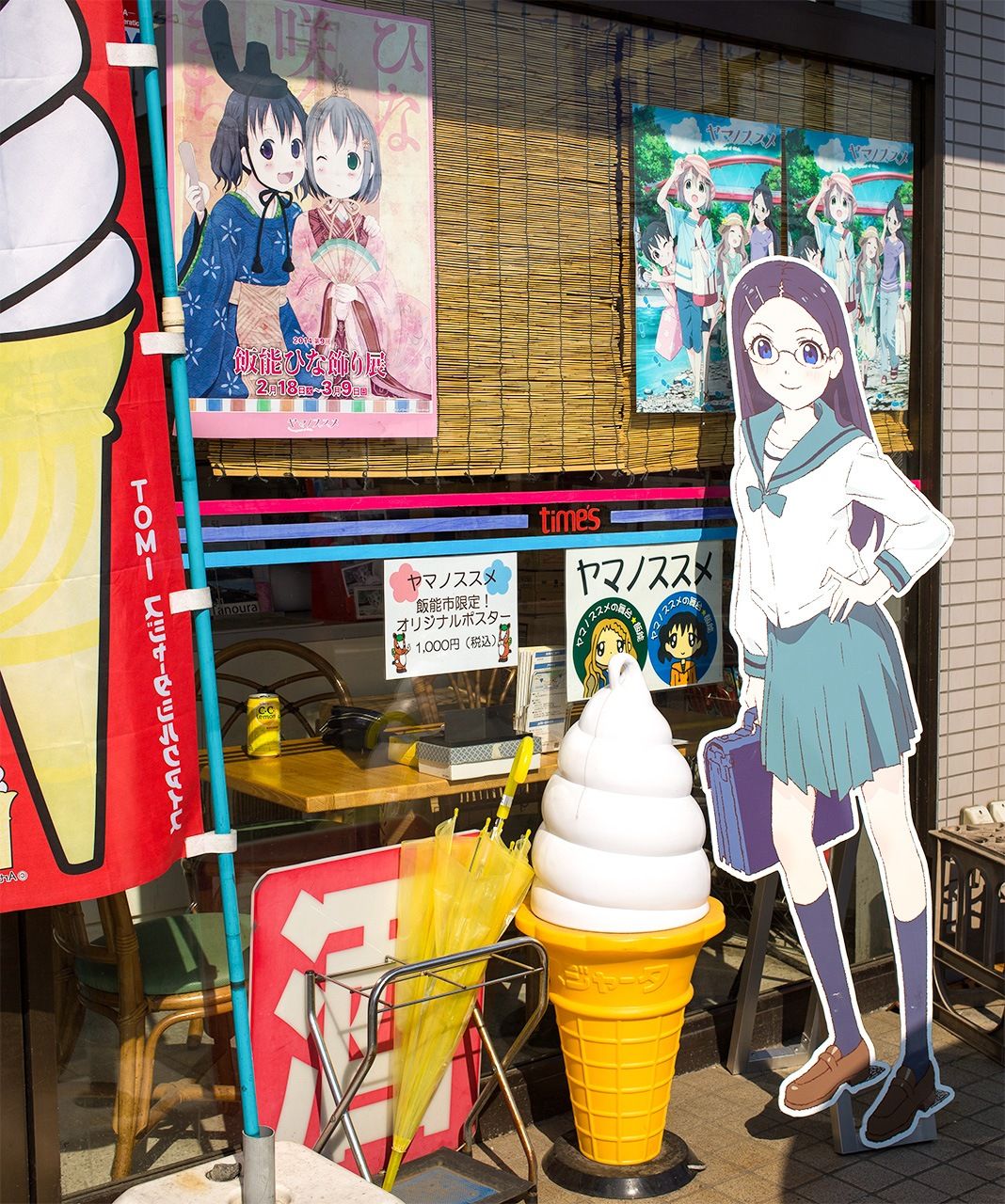
Anime decorations along the Hannō Ginza street. (© Gianni Simone)
Upon leaving the station and making our way to the bus rotary on the north side, we take the main street on the left—the one with the metal arch marked HANNO over its entrance—and then the second street on the left. That’s Hannō Ginza. While this narrow, modest shopping street is nothing like the world-famous district in Tokyo, its cobblestones, old-fashioned signs, rusty billboards, and sun-bleached photographs and posters give it a certain retro charm from decades long gone by. This is also the first anime-related location on our walk, as Aoi and her friends often visit this street in Encouragement of Climb. Indeed, many shops sport some sort of decoration from the anime.
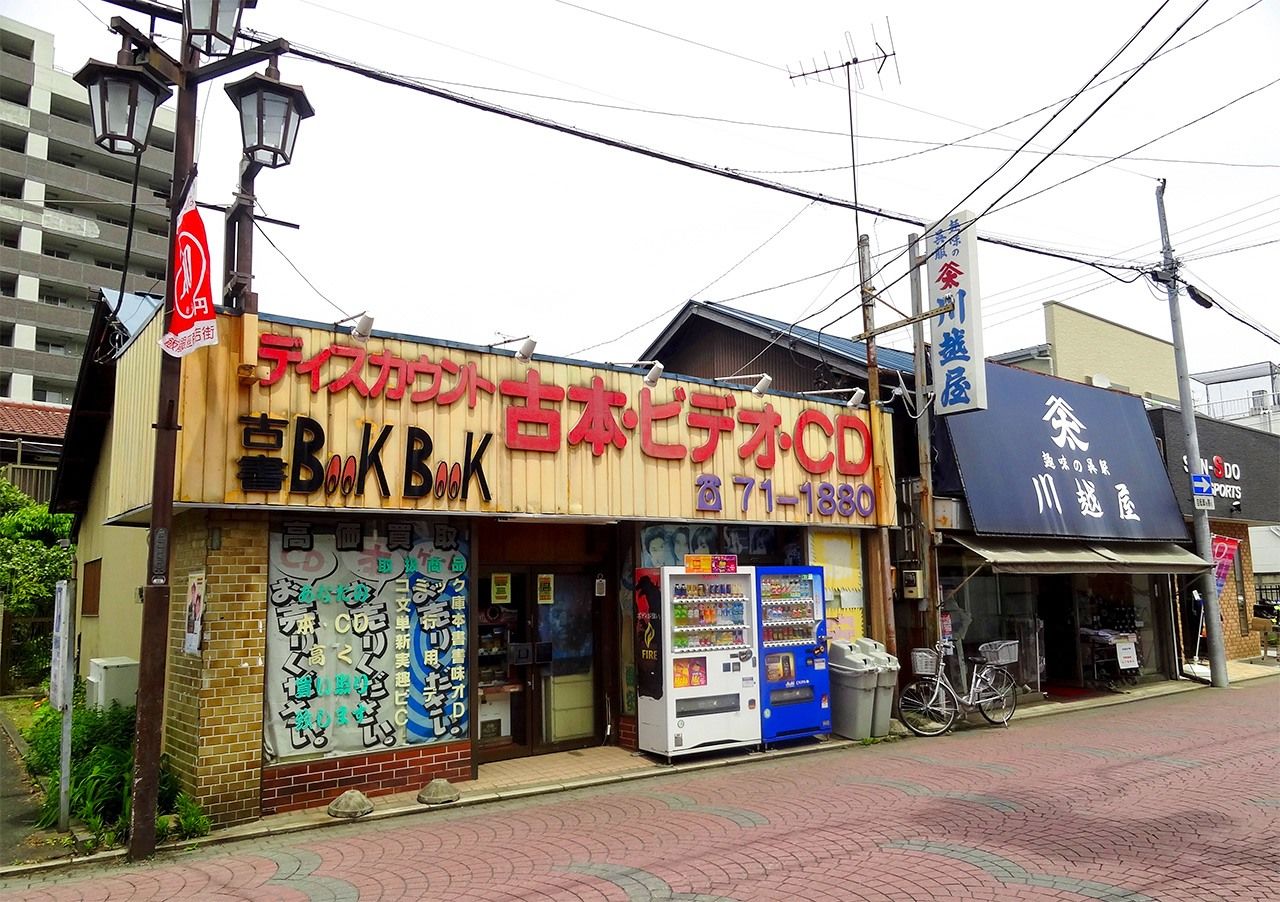
An old-fashioned shop on the Hannō Ginza. (© Gianni Simone)
Things become even more fascinating when we leave Ginza and head toward our destination. We first reach Kannonji, a fine example of a Buddhist temple belonging to the Chisan sect of Shingon Buddhism. Its claim to “fame,” oddly enough, is the statue of a white elephant that takes pride of place where the temple bell used to be.
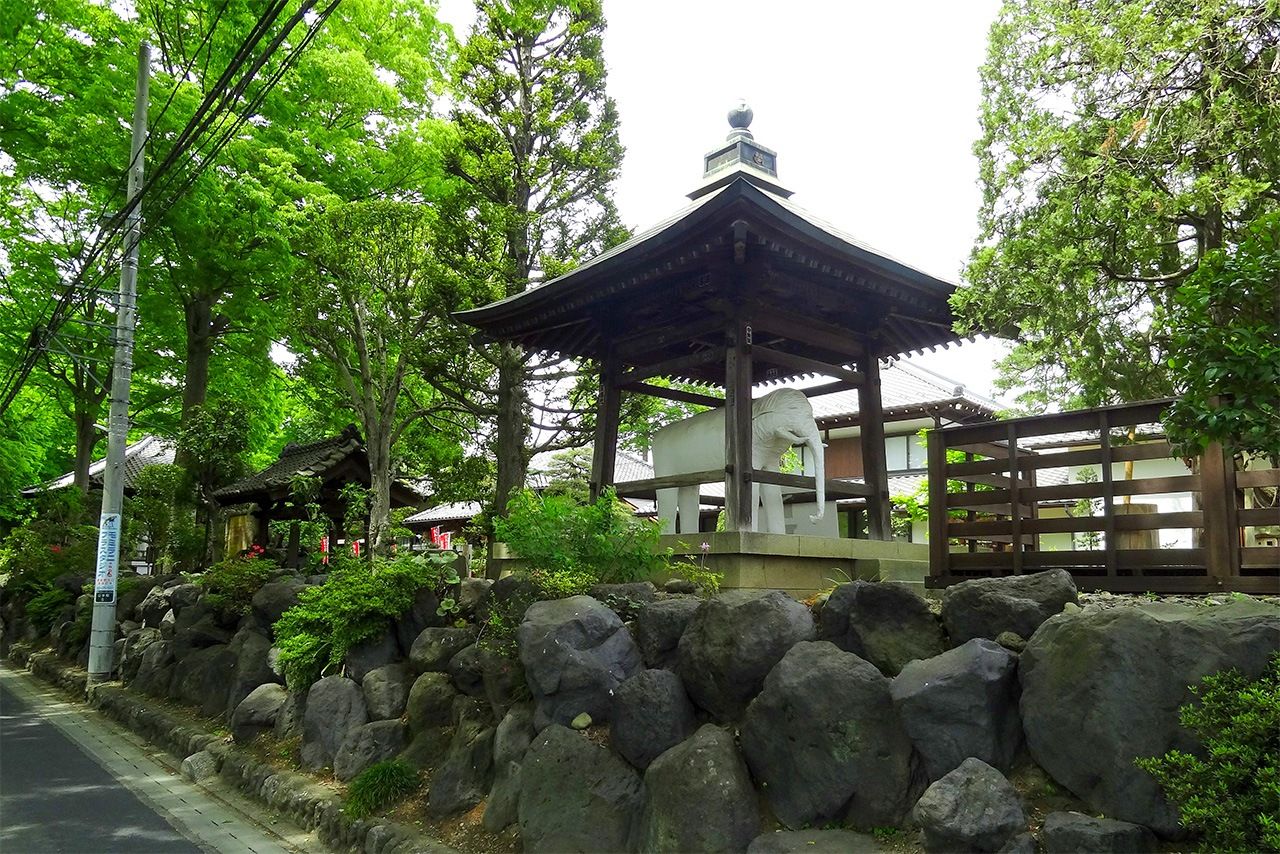
The white elephant in Kannonji. (© Gianni Simone)
Apparently, during the Pacific War, when resource-depleted Japan needed all the scrap iron it could find, the priest had to give the bell away to contribute to the war effort. In the 1960s the bell was replaced by the elephant—a donation from a local store owner—and has recently appeared in several episodes of Encouragement of Climb, thus attracting a new generation of pilgrims who like to write their wishes and prayers on the colorful ema (votive tablets) they buy from the temple itself.
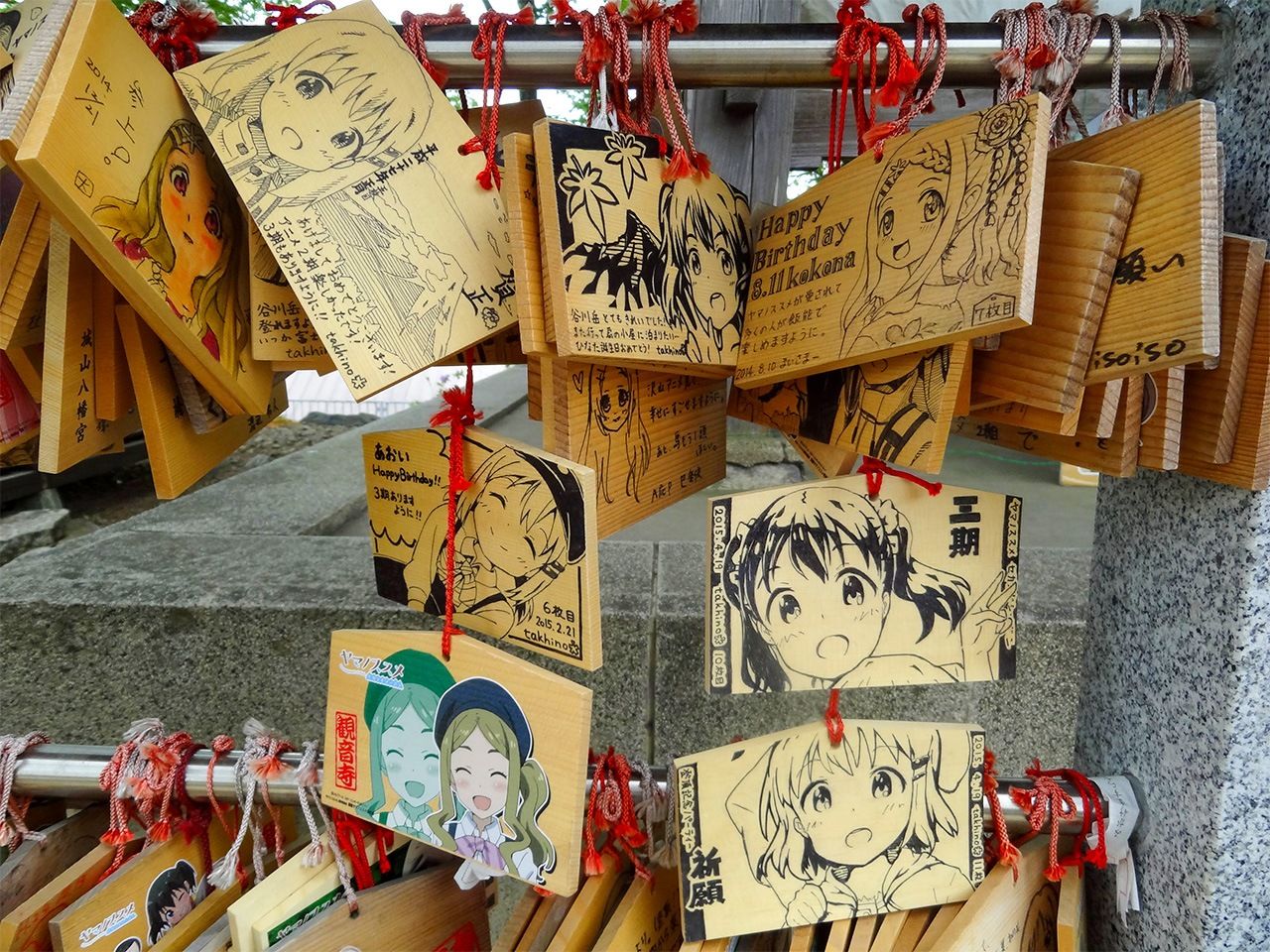
Ema expressing the prayers of anime fans in Kannonji. (© Gianni Simone)
The big temple across the street from Central Park to the north, called Nōninji, belongs to the Sōtō school of Zen Buddhism. In the Edo period (1603–1867) this temple was favored by the shōgun and had 20 branch temples in the Hannō region. However, it later fell on hard times, culminating in its burning to the ground in the 1868 Battle of Hannō during the Boshin War. The garden, in particular, is worth the 300-yen entrance fee. It was made in the Momoyama period (1573–1603) and has been selected as one of Japan’s best 100 gardens.
The real fun, however, starts now, as the area behind Nōninji is full of accessible and easy hiking trails, some of which appear in Encouragement of Climb. The closest one is Tenranzan (Mount Tenran). More than anything else, this is a sort of trial run for beginners, as it’s only 195 meters above sea level, but it makes for a nice workout. It used to be called Mount Atago, named for the Atago Shrine standing at its summit. In 1883 it was visited by Emperor Meiji when he came to observe army training. From the observation deck at the top, you can see the Chichibu Mountain Range, Okutama and, on a clear day, even Mount Fuji.
Other hiking trails lead to Mikaeri-zaka and Mount Tōnosu (271 meters) farther westward. Depending on how much time and energy you have, from Tenranzan you can branch eastward instead and walk the Oku-Musashi Nature Trail. The region offers many walking options, and the Hannō city website has plenty of maps and information (mainly in Japanese), including bus and train connections.
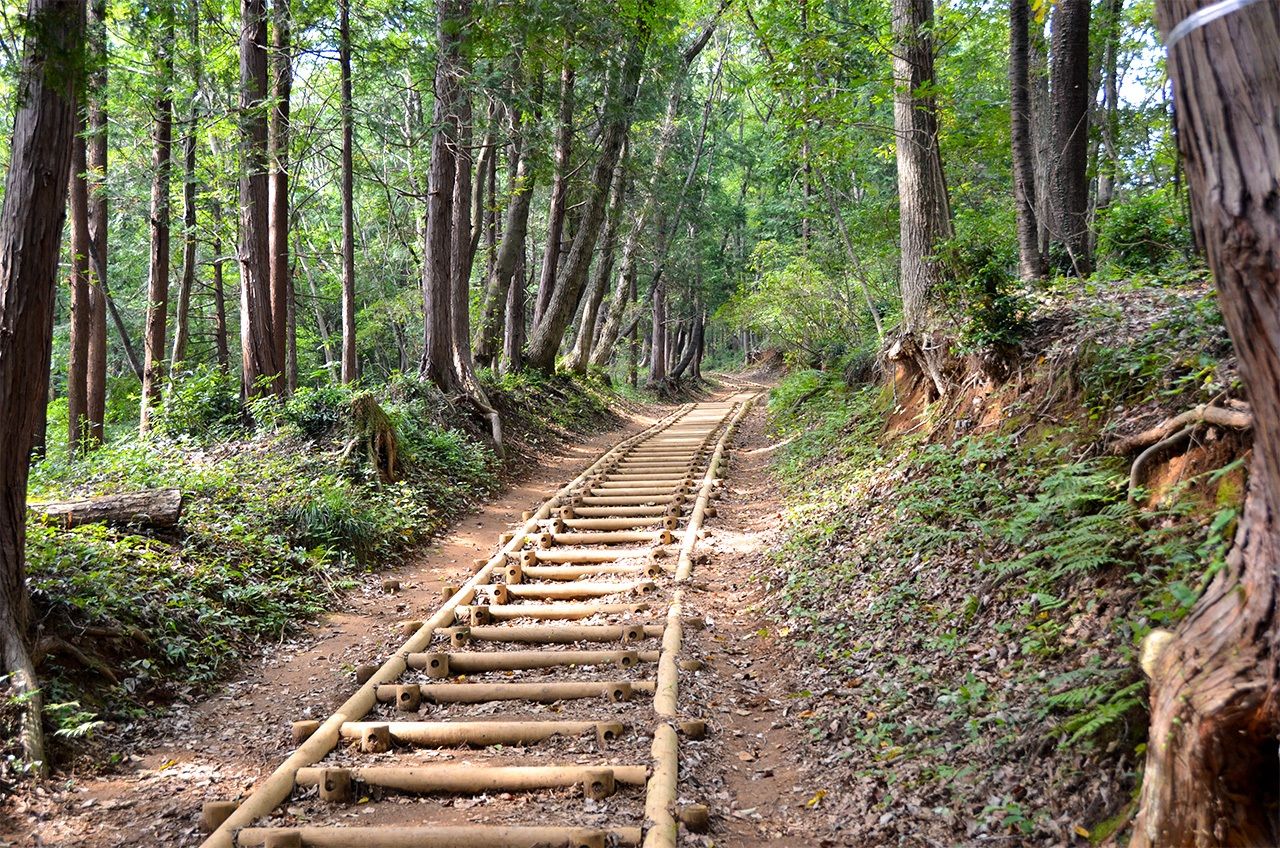
Mikaeri-zaka, the path leading to the top of Mount Tōnosu. (© Gianni Simone)
After coming down, let’s stop once again at Central Park. This place has much older and stronger links to Japanese animation. In fact, if we wander around the park, we find a statue of Tetsuwan Atomu (Astro Boy), Tezuka Osamu’s most popular character. That’s actually one of the only existing Atomu statues in the world, and is a testimony of the artist’s deep connection with the city of Hannō. However, since the bronze statue was completed in 1983, few people besides hardcore Tezuka fans have been aware of its existence.
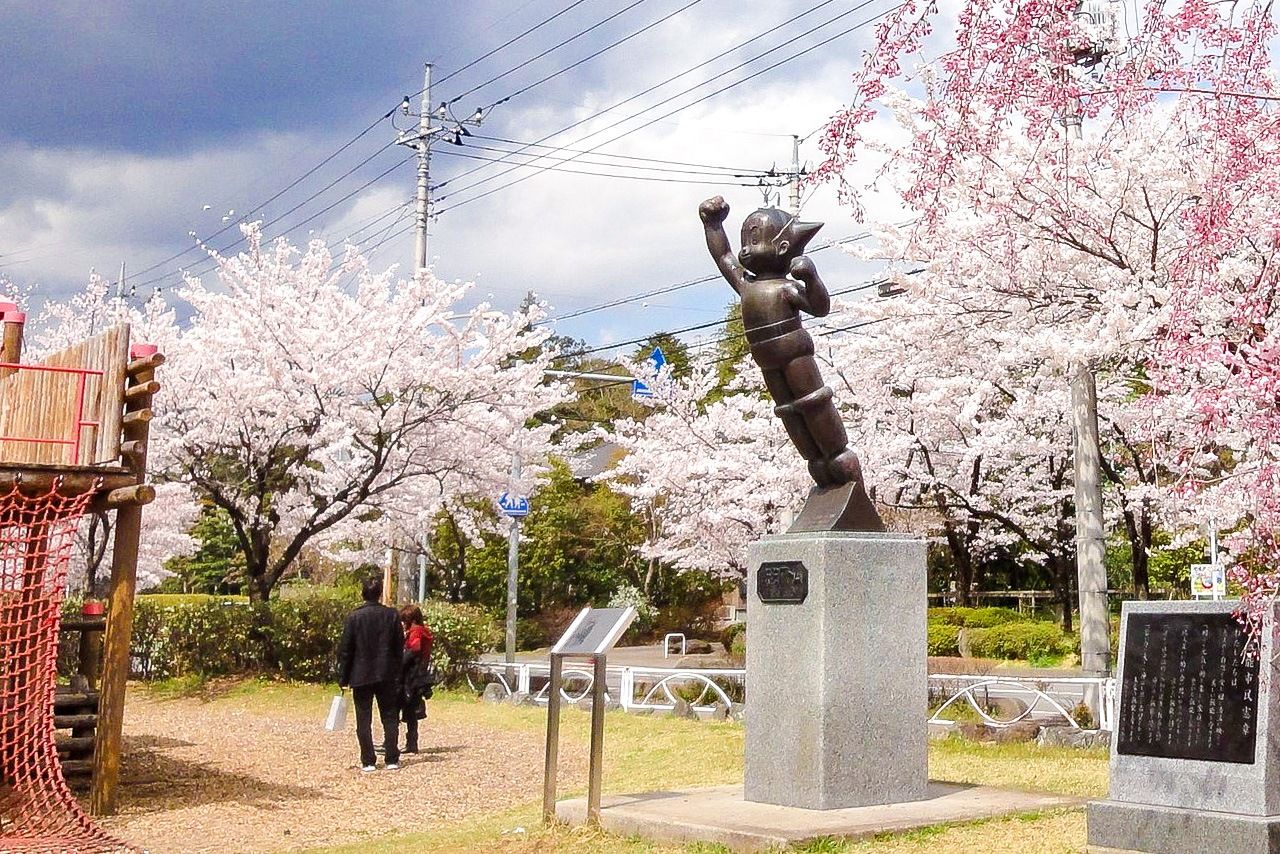
The Astro Boy bronze statue, one of only a handful in the world. (© Oku Musashi Hannō Kankō Kyōkai)
The man behind this project is Noguchi Isao, a local resident and former employee of Tezuka’s company, Mushi Production. A Tezuka fan since he was a kid, Noguchi finally landed a job in the company’s publishing department in 1964 and developed a close relationship with Tezuka that continued even after he left the company to take over his family’s seed and plant business, He even got permission to decorate his shop with Tezuka’s characters, including a neon sign shaped like the mythical immortal bird featured in Hi no tori (Phoenix).
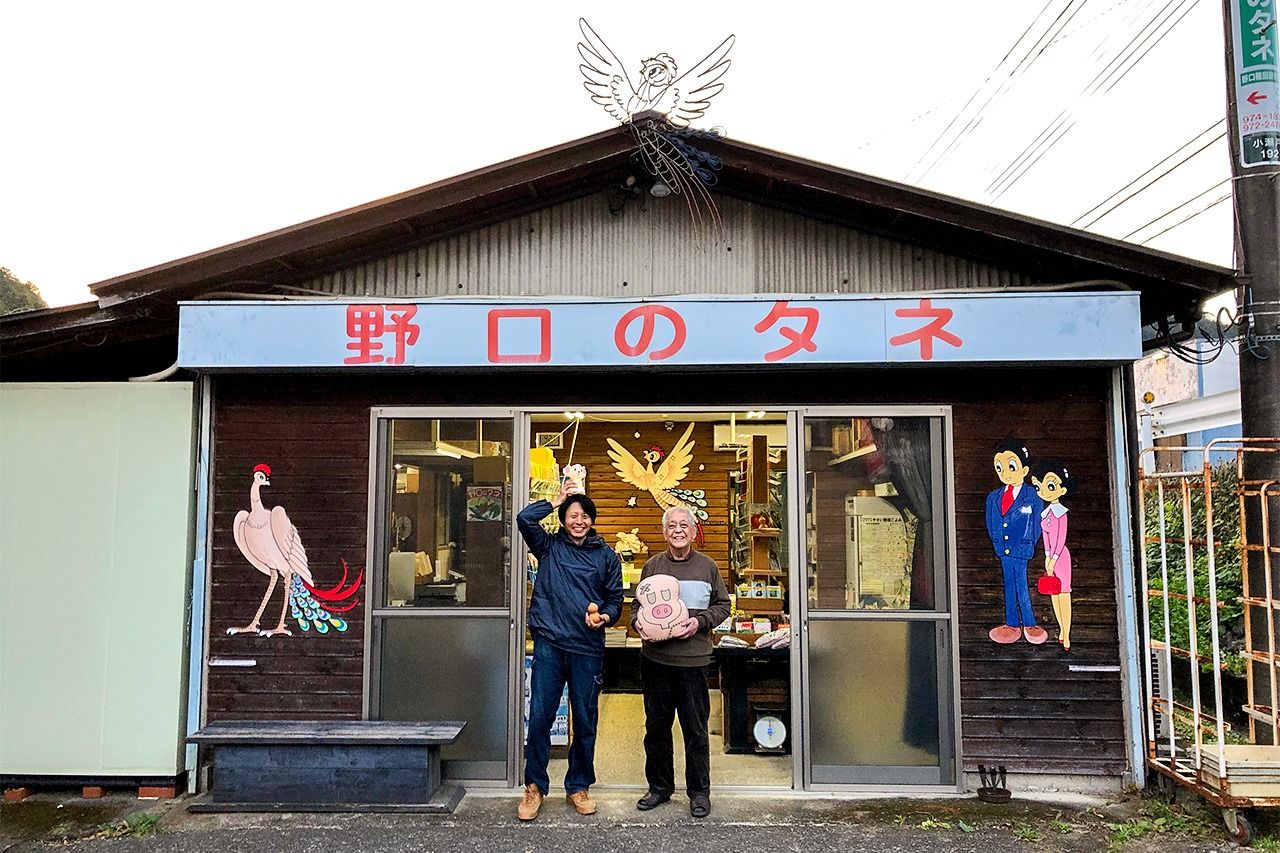
Noguchi Isao, at right, stands before the “Noguchi no Tane” storefront. (Courtesy of Noguchi no Tane)
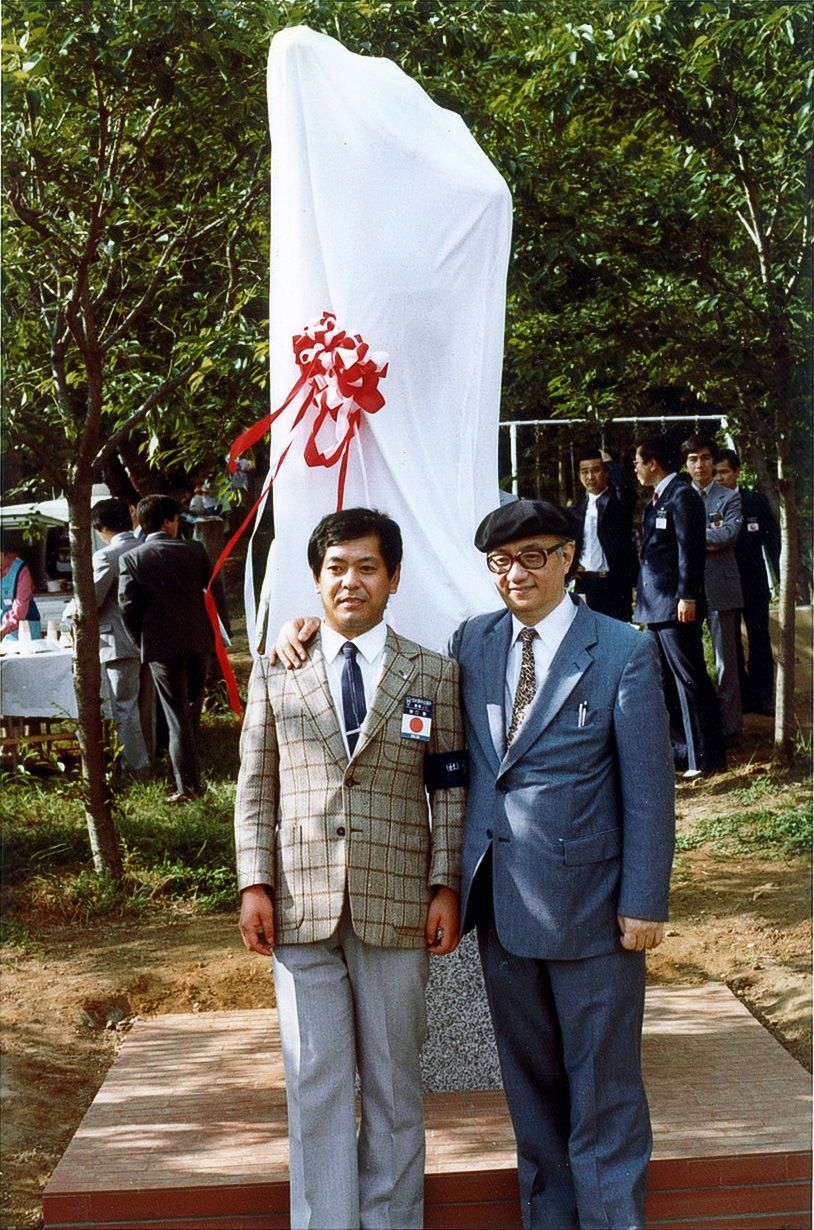
Noguchi Isao, at left, and the “God of Manga” Tezuka Osamu at the unveiling of the statue. (Courtesy of Noguchi no Tane)
One day in 1980 Noguchi received a call from Tezuka. The artist said he was thinking about moving both his house and office to Hannō and asked Noguchi to look for a suitable piece of land. Eventually, Noguchi found the right place, but when he visited Tezuka’s office to show him the site photos, he was told his former boss had already found another place: following his family’s desire and staff’s opinion, he was going to move his house to Higashi-Kurume, in Tokyo’s western suburbs, and his studio to Niiza, another small town in Saitama. While disappointed by this turn of events, Noguchi decided that at the very least he would try to have a statue of Astro Boy installed in Hannō.
In order to raise the necessary ¥3 million, the local Chamber of Commerce decided to hold a Manga Festival. Noguchi contacted all the manga artists he knew and they donated their autographs, which were auctioned off to raise the money. The festival was held for two consecutive years, in 1981 and 1982, and Tezuka himself participated in the second edition, quickly signing more than 100 boards. Artist Hirose Keiji cast the bronze statue in his workshop in Hannō. After the statue was completed, the unveiling ceremony was held on May 29, 1983.
Since Tenran and Tōnosu are rather easy climbs, you may want to explore the area some more, in which case you can go down to the Iruma River and check out its red Wariiwa Bridge, another popular Encouragement of Climb location. The hills on the other side of the river, by the way, have more hiking trails.
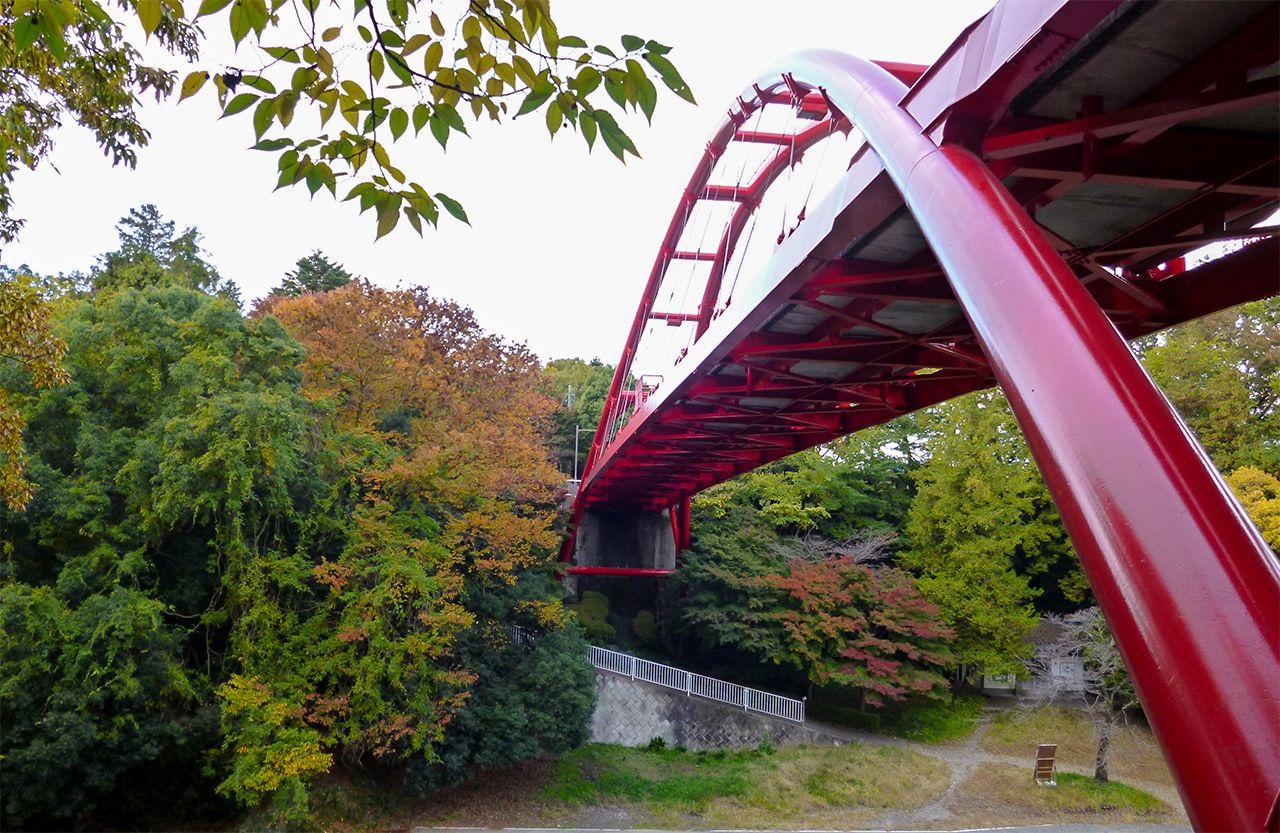
The brilliant red Wariiwa Bridge. (© Gianni Simone)
Last but not least, hardcore fans of the anime should make a detour and have a look at Seibō Gakuen, the school attended by Yukimura Aoi, Kuraue Hinata, and their hiking-loving friends. This institution also served as a filming location for the 1990 live-action version of the manga Sakura no sono (The Cherry Orchard) and was a model for a rival high school in the 2004–14 baseball manga Rasuto iningu (Last Inning). It also appeared in the 2000 horror film Shisha no Gakuensai (School Day of the Dead).
How to get to Hannō
From Ikebukuro Station in Tokyo, take the Seibu Ikebukuro Line toward Chichibu and get off at Hannō Station.
For more information about activities in Hannō: https://hanno-tourism.com
(Originally written in English. Banner photo: Anime decorations along the Hannō Ginza street. © Gianni Simone)
otaku manga anime hiking pilgrimage Tezuka Osamu Hanno Encouragement of Climb